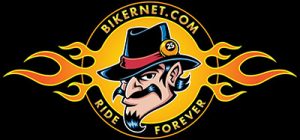
Indian suffered through one tumultuous setback after another, “And here's another example,” Don Whalen, curator and Indian collector, said while weeping over the recently Indian Bankruptsy.
“Damn it, Don,” I said, “Get over it.” It may be the anti-name, like Edsel, that should be avoided like slick roads. Shortly after the first Indian decade, through stock sales, the founders, George Hendee and Oscar Hedstrom, lost control of the company. But they kept at it and developed a sprung frame in 1912.
Unfortunately the founders were only hired as managers and disagreed with the board of directors on financial matters including the factory's racing efforts, material costs and expenditures for company expansion. It was a rusty, shot-up road sign of things to come. Through disputes with the board, Oscar Hedstrom resigned from the company on March 24th, 1913. The board no-longer contained any motorcycle enthusiasts, only businessmen.
As history has it, the bicycle-racing enthusiasts, Oscar and George, competed in Velodromes, initially slipstreamed with tandem bicycles until, in 1898, when European internal combustion pacing machines were developed. They were manufactured in France. In 1899 imported pacing machines debuted in New York's Madison Square Garden Velodrome. Unreliable European machines, in 1900, the young Oscar Hedstrom, built his own pacer. Since George Hendee was involved in racing through his Springfield, Massachusetts Bicycle Company, the two met. From the relationship came Indian Motorcycles, manufactured by the Hendee Manufacturing Company. And trouble began. This particular excellent example of 1914, rocky, Indian heritage came from the Richard Bunch collection in Northern California. The bike contained many new innovations and accessories uncommon to motorcycles of that era.
The starters were removed. They were replaced with kick-start contraptions bolted to the transmission. One owner, Pancho Villa, never returned his motorcycle for the refit.
This rare machine was owned by a Southern California collector who commissioned by John Eagle, a well-known, well-respected, old school restorer, to refurbish the classic. “It's the last restoration he ever completed,” said Don Whalen, the Bunch Museum curator. The collector pledged the bike to another collector as collateral on a loan. Destined to be sold to another museum, that deal fell through and afforded Don the opportunity to purchase it for the extensive Bunch American collection.

It took John Eagle three years to restore, since it housed extensive accessories uncommon to most antique bikes. He couldn't find batteries to fit the original battery box until he stumbled onto a Japanese battery distributor who supplied batteries for garden tractors. It took six weeks for the distributor to find the correct sized battery. “It fires it right up,” Don added, “but it is difficult to maintain a fully charged unit.”
There are only two other known examples existing in collections or museums. One is located in the expansive Otis Chandler Museum, but it is a British import. The other is housed in the Midwest, in original condition, with an electric start, but it was discovered beneath a hardware store (many early dealerships were hardware stores), and never ridden.
The recall almost put Indian out of business. From 1913 through the recession of 1915, motorcycle manufactures dropped like flies.
According to Stephen Wright's book, “The American Motorcycle”, Indian offered seven models for 1914. Six were 61-cubic inch twins and once single. Three of the twins featured electric lights and horn. The Standard model and the two-speed Tourist Standard model were fitted with batteries. Owners were forced to recharge them after every 12.5 hours of use.
Here's what Stephen had to say about the swingarm model, “The electric model was the Hendee Special, which was fitted with a 1/2 hp starter that turned the motor over at 500 rpm. Once running, the starter was designed to switch over to generator mode and recharge the batteries; however, repeated used of the electric starter on short trips quickly ran the batteries down and the rider had to push-start the machine. This was a problem that could not be overcome, and as a result the model was withdrawn.”
All wasn't dower in 1914 for Indian. That year Paul Derkum and his wife Ruby sailed to England, April 28th, representing Indian to compete in the famous Isle of Man race on public roads.

The 225-mile Senior race was run on May 21st. Derkum finished way behind. Cyril Pullin won the race on a Rudge (49.99 mph average speed) followed by H.R. Davies on a Sunbeam, but an Indian did place third. Ridden by O.C. Godfrey and another Indian rider, C. B. Franklin rolled in 8th place.
This Hendee Special purchase was a coup for the Bunch collection. A rare fully functional example of a model with significant history. They currently have 40 Indians under their San Jose roof, from 1905 to 1953.
Indian continued to stumble and ceased production in '53. In the '90s two efforts to revive the name failed, and finally in 2003 Indian slipped into bankrupsty courts once more. “What's next?” I asked Don.
